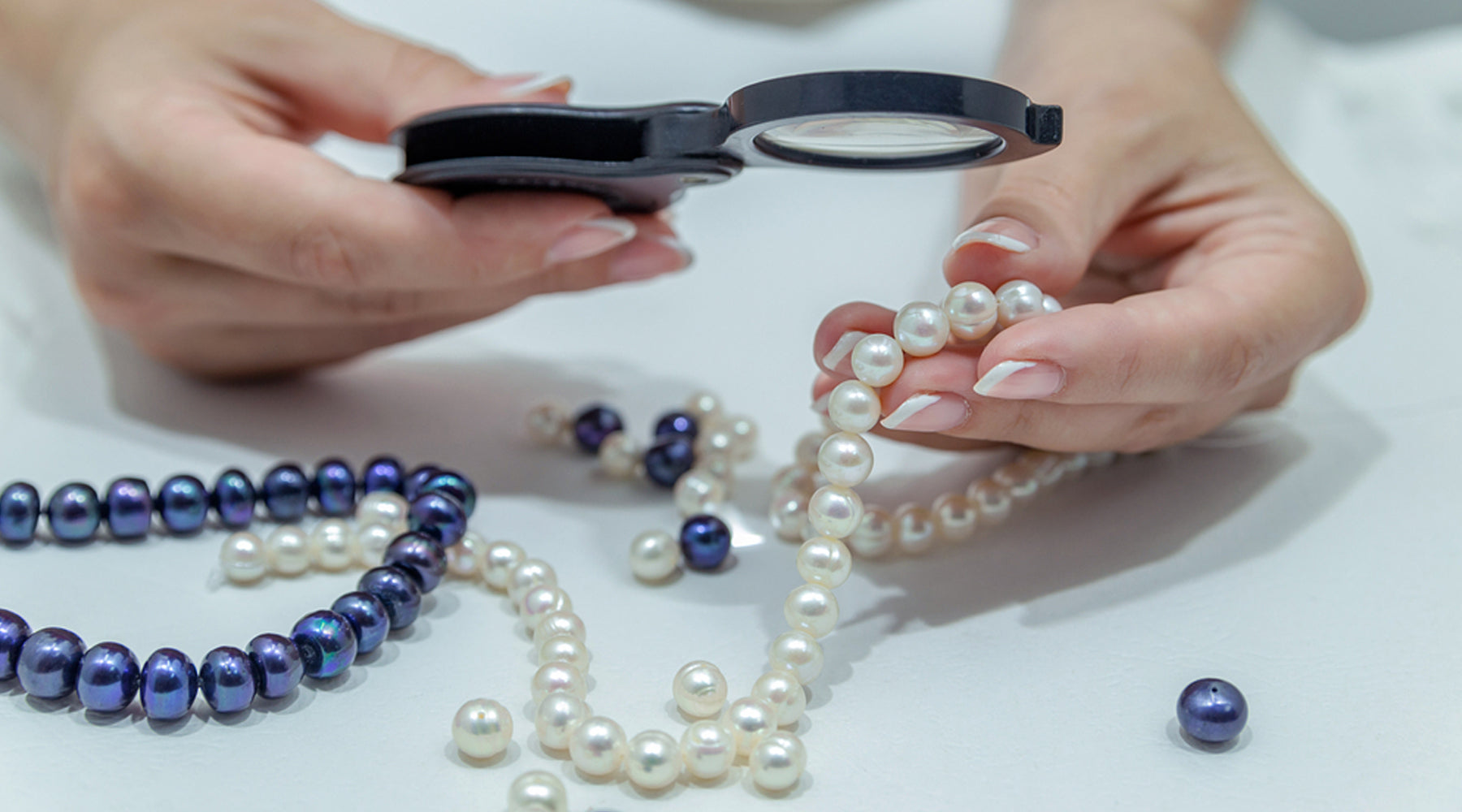Pearls can spruce up any look; a dainty white Akoya pearl necklace goes well with your office wear and evening gown.
What's more, they're available in many different shapes, sizes, and colors! There is a perfect pearl for everyone out there. Isn't that awesome?
In our previous blog post, Different Types of Pearls and Their Shapes, we've discussed many types of pearls that exist worldwide.
To summarize for our new readers: there are natural and cultured pearls.
Natural pearls are made when an irritant or food particle enters the shell of an oyster. The oyster then releases a substance called nacre (nay-ker) that covers the irritant until a pearl is formed. On the other hand, cultured pearls need a little human help; an irritant is surgically implanted into an oyster to trigger the release of nacre and produce pearls.
Let us set the record: natural and cultured pearls are 100% authentic!
However, that's not to say there aren't fake pearls in the market. Unfortunately, you can stumble upon fake pearls and be cheated into buying them for a hefty price.
Worry not! We're here to help. We've prepared a guide to help you differentiate between real and fake pearls.
Let's get started!
How to Tell if A Pearl is Real
1. Check the surface
One of the easiest ways to spot a fake is to check the pearls' surface quality.
These gemstones are a natural occurrence and, therefore, have their fair share of imperfections like blemishes on the surface. These blemishes are spots of color, tiny scratches, and bumps. Moreover, no two pearls are identical as they're created naturally.
So, if the pearl necklace you've been eyeing dhas shiny and smooth pearls with no blemish, chances are they're fake!
2. Check the price tag
Before purchasing pearl jewelry, research each type of pearl available in the market and their price ranges.
For example, a necklace made from Akoya pearls will definitely be on the pricier side, e.g., $10,000, since it has a high value due to its striking luster and round shape. Now, if your vendor is selling you a "real" Akoya pearl necklace for, let's stay, $150, it's right to be suspicious! That's most definitely a fake!
However, checking the price might not be enough as some vendors can sell fake pearls at the price point of real ones. In this case, it's better to use a combination of tips to differentiate between the two.
Want to know more ways to identify fake pearls? Keep reading!
3. Note the color
Another way to spot a fake pearl is to check the color of the pearls. Pearls are only limited to a few colors and are often dyed into different colors that don't occur naturally. Of course, that makes it quite hard to spot fake ones.
This is where pearl overtones come into play!
As we've already mentioned above, pearls are hardened layers of nacre. Since pearls are naturally made inside oyster shells, they have certain overtones visible when light hits them. These overtones are difficult to replicate; even if the fake ones have them, they're different from those found on the outer surface of genuine pearls.
4. Weigh the pearl
The weight of the pearl is one of the most common ways to differentiate between real and fake.
Genuine pearls are heavier than their fake counterparts. One easy way to test the weight is to hold both pearls in your hands and feel the difference between them. The pearl that weighs more is likely to be the real deal! That's because most fake pearls are made from plastic which weighs lighter.
Also, remember to compare the size of the pearl to its weight. For example, if the pearl in your hand is bigger but weighs less, it could be a fake.
5. Grab a UV light
If you want there to be no doubts, this is a sure-shot way to identify genuine pearls from fake ones!
When put under UV light, the genuine pearl will glow. That's due to the presence of natural compounds in the substance nacre. Since most faux pearls are made from plastic or glass, they'll not have the glow observed in genuine pearls.
You can find UV lights online for affordable prices. If you're a jewelry enthusiast and want to invest in expensive pearls, you should definitely try this tip!
Bonus Tip: Stainless Steel Table Test
If you really want to test to see if a pearl is natural, you can drop it on a stainless steel table.
A natural pearl will not bounce. On the other hand, a fake pearl will because it is most likely made from plastic.
Parting Thoughts
We hope these tips help you avoid scams and buy the pearls you've always dreamed of!
However, the most crucial tip to save yourself from a scam is to make sure you buy from a trusted vendor like DezLin. You can check the vendor's reviews on authentic websites and even search on Google "<BUSINESS NAME> SCAM."
Know other ways to spot a fake pearl? Share them with us in the comments section!



